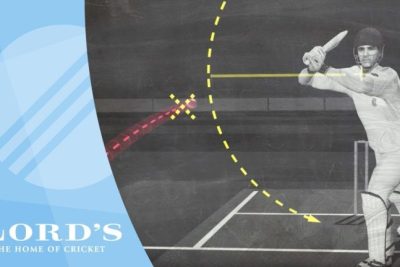Flag etiquette plays a pivotal role in the world of cricket matches, where tradition and respect intertwine on the field. From the fluttering national flags to the graceful raising and lowering ceremonies, these timeless rituals evoke a sense of pride and honor among players and spectators alike. In this article, we delve into the fascinating world of flag etiquette in cricket matches, exploring the significance behind these symbolic gestures and the unwritten rules that govern their execution. Join us as we unravel the rich tapestry of cricket’s flag traditions, celebrating the beauty and unity they bring to the game.
- Respect the national flag: During cricket matches, it is essential to show utmost respect towards the national flag. The flag should be hoisted correctly and should never touch the ground or be used for any disrespectful purposes.
- The flag’s placement: When displaying the national flag during cricket matches, it should be placed at a prominent location, preferably on a flagpole. It should always be positioned at the highest point and should never be smaller than any other flag present.
- The national anthem: Before the start of a cricket match, it is customary to play the national anthem of both competing countries. Players and spectators should stand up and show respect by removing their hats, placing their right hand over their heart, or saluting during the national anthem.
- Half-masting the flag: In the unfortunate event of a national tragedy or mourning period, the national flag may be flown at half-mast during cricket matches as a sign of respect. This practice should be followed strictly and the flag should be raised to full mast after the mourning period is over.
- Proper flag disposal: Flags that are worn out, damaged, or soiled should not be displayed during cricket matches. When a flag is no longer in usable condition, it should be disposed of in a dignified manner, preferably by burning it in a respectful ceremony.
What are the rules for umpiring?
Umpiring rules are essential guidelines that govern the conduct of umpires in a game. Their primary objective is to ensure fair play and maintain the integrity of the sport. Umpires are strategically positioned on the field to have the best possible view of any crucial action that may require their decision. However, their placement should not hinder the bowler’s run-up or obstruct the striker’s view.
These rules emphasize the importance of positioning for umpires. They must be able to witness and assess every aspect of the game accurately. The umpire at the bowler’s end must find a spot that allows them a clear view without interfering with the bowler’s run-up or obstructing the striker’s line of sight. This ensures that their decisions are made with the utmost fairness and impartiality.
The coordination between the umpires’ placement and their decision-making process is critical. By adhering to the umpiring rules, umpires can effectively fulfill their duty of upholding the principles of the game. Their positioning allows them to make accurate judgments, contributing to a fair and enjoyable sporting experience for players and spectators alike.
What does cricket etiquette entail?
Cricket etiquette encompasses a set of unwritten rules and customs that govern the conduct of players on the field. It emphasizes respect, fair play, and sportsmanship. One key aspect of cricket etiquette is maintaining silence once the bowler has started his run-up, ensuring that fielders do not distract the batsman. Additionally, engaging in any form of sledging, which involves using abusive language or personal insults to unsettle the opposition, is strongly discouraged. Players are also expected to signal to the umpire when the ball reaches the boundary, displaying good sportsmanship and fair play. Another important rule is to avoid sitting on the ground, even during breaks, as it can damage the pitch. Lastly, players should always be mindful to avoid walking on the pitch, preserving its integrity and ensuring a level playing field for both teams. By following these guidelines, players demonstrate their understanding and adherence to cricket’s long-standing traditions of respect and fair play.
How can one umpire in cricket?
If you’re interested in becoming an umpire in cricket, there are a few steps you need to follow. First, you’ll need to join a cricket association that offers umpiring courses. These courses will provide you with the necessary knowledge and skills to effectively officiate games. It’s important to study the rules of the game thoroughly and familiarize yourself with the different hand signals used by umpires. By doing so, you’ll be well-prepared to make accurate decisions on the field.
After completing your umpiring courses and gaining a solid understanding of the rules, it’s time to put your skills to the test. Look for opportunities to umpire in your local cricket league or club. This will not only provide you with practical experience but also help you build a reputation as a reliable and competent umpire. Remember to stay up-to-date with any rule changes or updates that may occur, as cricket rules can evolve over time.
Umpiring in cricket requires dedication, knowledge, and practice. By joining a cricket association, taking umpiring courses, studying the rules, and gaining practical experience, you’ll be on your way to becoming a skilled umpire. So, don’t hesitate to take the first step and start your umpiring journey today!
Unveiling the Secrets: Mastering Cricket Match Flag Etiquette
Unveiling the Secrets: Mastering Cricket Match Flag Etiquette
In the world of cricket, where traditions and decorum hold immense importance, understanding and adhering to flag etiquette during matches is crucial. Flags fluttering high in the stadium not only represent the teams competing but also embody the spirit of the game. The sight of colorful flags waving in unison creates an electric atmosphere, and by mastering cricket match flag etiquette, you can become an integral part of this captivating spectacle. From knowing when to raise the national flag to understanding the significance of a victory lap with the team flag, these subtle yet powerful gestures can enhance your cricket experience and showcase your respect for the sport.
With a simple wave of a flag, spectators can convey their unwavering support for their favorite team, igniting a wave of enthusiasm throughout the cricket stadium. However, flag etiquette goes beyond mere waving; it encompasses proper handling, positioning, and respect for the symbolic representation that the flag holds. Whether it’s the flutter of the national flag during the national anthem or the momentary pause as the team flag is raised to celebrate a victory, understanding and mastering cricket match flag etiquette allows you to participate in the rich traditions of the game. So, next time you find yourself in the midst of a thrilling cricket match, remember the power of a flag and the impact it can have on the players, the supporters, and the overall cricketing experience.
Elevate Your Game: Essential Flag Protocol for Cricket Matches
Elevate Your Game: Essential Flag Protocol for Cricket Matches
In the world of cricket, the use of flags serves as a fundamental tool for effective communication and coordination. Whether it’s signaling a boundary, a dismissal, or a weather interruption, understanding the essential flag protocol is crucial for players, umpires, and spectators alike. To elevate your game and ensure seamless gameplay, it is crucial to familiarize yourself with the key flag signals and their meanings. By adhering to this flag protocol, you can enhance the spirit of fair play and make every cricket match a visually captivating experience.
One of the most commonly used flags in cricket is the boundary flag. When a batsman hits the ball beyond the boundary line, the fielder nearest to the ball raises a white flag to signal a four, while a red flag indicates a six. This clear and concise flag protocol allows players and spectators to instantly grasp the outcome of the shot, adding to the excitement of the game. Understanding these signals helps maintain a fair and transparent playing environment, allowing everyone to appreciate the skill and technique of the batsmen.
In addition to boundary signals, flags are also significant in indicating dismissals. When an umpire raises a finger to declare a batsman out, a yellow flag is simultaneously raised to ensure that all players and spectators are aware of the decision. This simple yet eye-catching gesture helps prevent confusion and disputes, allowing the game to progress smoothly. By following this flag protocol, the spirit of fair play is upheld, and the game’s integrity is maintained, making cricket matches more enjoyable for all involved.
Overall, the flag protocol in cricket plays a vital role in elevating the game and enhancing the overall experience for players and spectators alike. By understanding the meanings behind different flag signals, such as those for boundaries and dismissals, everyone can follow the game’s progress effortlessly. This clean and concise communication system ensures that cricket matches are visually captivating, fair, and engaging, making them a true delight to watch and participate in. So, next time you step onto the cricket field, remember to embrace the flag protocol and elevate your game to new heights.
Flag Etiquette 101: The Ultimate Guide for Cricket Enthusiasts
Flag Etiquette 101: The Ultimate Guide for Cricket Enthusiasts
As a cricket enthusiast, understanding flag etiquette is crucial to show your respect and support for the game. When it comes to displaying flags during cricket matches, there are a few key rules to follow. Firstly, always ensure that the flag is clean and in good condition. A tattered or dirty flag can be seen as disrespectful. Secondly, choose the right size flag for the occasion. A large flag can obstruct the view of other spectators, so opt for a smaller one that is easily manageable. Lastly, when waving the flag, do so in a controlled manner. Excessive waving or flapping can distract players and disrupt the game. By adhering to these flag etiquette guidelines, you can proudly display your love for cricket while showing respect for the sport and its players.
To further enhance your flag etiquette skills as a cricket enthusiast, it is important to know when and where to display the flag. During a cricket match, it is customary to fly the flag of the home team. This demonstrates your support and loyalty towards your favorite team. However, it is essential to be mindful of the surroundings and respect any rules or regulations set by the venue. Some stadiums may have specific areas designated for flag-waving, so be sure to follow these guidelines. Additionally, it is customary to lower the flag during moments of silence or national anthems to pay tribute and show reverence. By understanding the appropriate times and places to display the flag, you can uphold the spirit of cricket and contribute to the overall atmosphere of the game.
In the world of cricket, flag etiquette plays a crucial role in maintaining the spirit of the game. From the unfurling of the national flags to the respectful folding and storing at the end, every detail is a symbol of unity, respect, and sportsmanship. The fluttering flags not only represent the teams but also the passion and pride of the nations they represent. As spectators, we are reminded of the power of sports to bridge divides and bring people together. So, the next time you watch a cricket match, pay attention to the flags and let them remind you of the beauty and camaraderie that cricket embodies.


